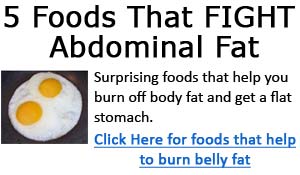What are saturated fatty acids?
Saturated fatty acids only have single chemical bonds, and fats containing them are known as saturated fats. These occur in high quantities in lard, butter, whole milk, cream, eggs, red meat, chocolate and solid shortenings. Too much saturated fat in your diet can raise cholesterol in the blood, as well as increasing the risk of coronary artery disease.
What are monounsaturated fatty acids?
Where saturated fatty acids have a single bond, monounsaturated fatty acids have a double bond. Monounsaturated fats are found in avocados, nuts and oils including olive, peanut and canola oil. It is believed by scientists that consuming a lot of monounsaturated fats helps to lower LDL cholesterol – ‘bad’ cholesterol – and lower the risk of coronary heart disease. This is especially the case when these fats are used in place of saturated fats and refined sugars.
What are polyunsaturated fatty acids?
Polyunsaturated fatty acids are distinguished by the fact that they have more than one double bond. You can find polyunsaturated fats in high quantities in vegetable oils, corn, soy and sunflower.
What are essential fatty acids?
Polyunsaturated fatty acids which the body cannot produce on its own but that it needs for metabolic function are known as essential fatty acids. It is necessary to eat foods containing essential fatty acids to maintain metabolic function.
What are omega-3 fatty acids?
Omega 3 fatty acids are found in many varieties of fish including salmon, halibut, sardines, albacore, trout, herring, shrimp, clams, tuna, catfish and cod. They are essential polyunsaturated fatty acids with a double bond in the third carbon position from the methyl terminal (chain end) – this position accounts for the ‘3’ in the description. You can also obtain Omega 3 from walnuts, flaxseed oil, canola oil and spinach.
What are omega-6 fatty acids?
As the name would suggest, Omega 6 fatty acids have a double bond in the sixth carbon position from the methyl group – they can be found in corn, safflower, sunflower, soybean and cottonseed oil.
What are the n-3 and n-6 fatty acids?
N3 is another name for Omega 3, while N6 is another name for Omega 6.
What are trans fatty acids?
Known as trans fats, trans fatty acids solidify liquid oils having been made through hydrogenation. If you heat an Omega 6 oil such as corn oil to a high temperature, trans fats are created. Trans fats increase the shelf life of oils and can be found in some margarines as well as vegetable shortenings, commercial pastries, fried foods, crackers, cookies and other snacks. Trans fats should not be consumed to excess as they increase ‘bad’ cholesterol or blood LDL cholesterol, while decreasing HDL or ‘good’ cholesterol and raising the risk of coronary heart disease.
>> Click here for Omega 3 Fish Oil Supplement
>> Click here for HCBL Omega 3-6-9
>> Click here for HCBL Fish Oil
>> Click here for HCBL DHA-250
CONCLUSION
Although it may not seem logical, fats are a necessary part of a healthy diet – it is important however to identify which fats are beneficial to health and which are detrimental to it. A good intake of the correct balance of omega3 to omega6 essential fatty acids is vital to keep the body healthy.
>> Click here to discover foods that burn belly fat and get 6 pack abs

 Do you know your fats? What is fat?
Do you know your fats? What is fat? 